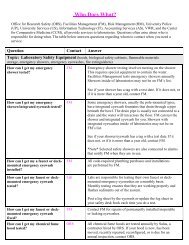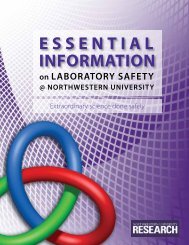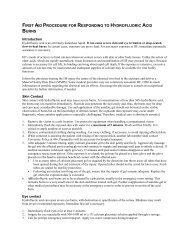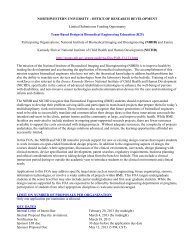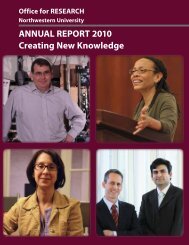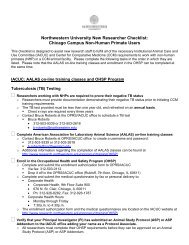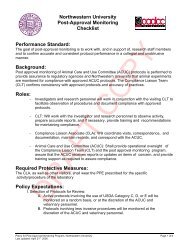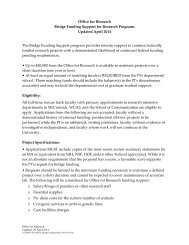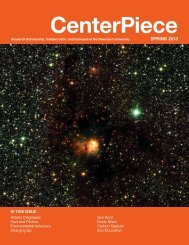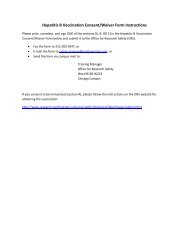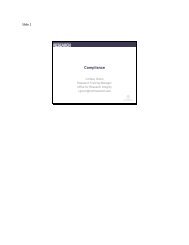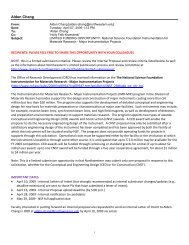annual report 2011 - Office for Research - Northwestern University
annual report 2011 - Office for Research - Northwestern University
annual report 2011 - Office for Research - Northwestern University
You also want an ePaper? Increase the reach of your titles
YUMPU automatically turns print PDFs into web optimized ePapers that Google loves.
������������������<br />
����������<br />
�<br />
Contest submissions come from <strong>Northwestern</strong> faculty,<br />
sta�, and students working in disciplines ranging<br />
from genetics to engineering. Images must originate<br />
from a <strong>Northwestern</strong> research project and cannot<br />
be fundamentally altered from their original <strong>for</strong>m. In<br />
essence, the submitted images represent both scienti�c<br />
data and art.<br />
An interdisciplinary panel of local artists, scientists, and<br />
community leaders evaluates each image <strong>for</strong> originality,<br />
aesthetics, and composition. The top �ve winners<br />
receive cash prizes.<br />
“This contest brings together art and science in a<br />
truly educational way,” says Mike Kennedy, director of<br />
Science in Society. “Not only are the images themselves<br />
beautiful, but the science behind them is equally<br />
compelling.”<br />
24 Annual Report <strong>2011</strong> | Excellence in <strong>Research</strong><br />
1<br />
As part of its outreach<br />
mission, Science in Society<br />
organizes an <strong>annual</strong><br />
scientific images contest<br />
<strong>for</strong> researchers across the<br />
<strong>Northwestern</strong> community.<br />
“Capturing the Beauty of<br />
Science” started in 2010 as<br />
a visually engaging way to<br />
share the beauty and societal<br />
impact of basic research with<br />
public audiences.<br />
In addition to being available on the Science in Society<br />
website, an exhibit of winning images has traveled to<br />
the Evanston Public Library, Evanston’s Noyes Cultural<br />
Arts Center, Chicago’s Navy Pier, and Skokie’s West�eld<br />
Old Orchard mall.<br />
FIRST PLACE (�gure 1): Andrew Koltonow, graduate<br />
student in the materials science and engineering<br />
laboratories of Jiaxing Huan and Samuel Stupp.<br />
These clusters of zinc oxide nanoparticles help<br />
engineers design new materials <strong>for</strong> organic solar cells.<br />
They are used in a coating that allows electric current to<br />
�ow only in the correct direction, blocking unintended<br />
leakage and allowing researchers to study the energy-<br />
harvesting material more reliably. Clusters at lower<br />
left <strong>for</strong>med more slowly than the rest, producing the<br />
large, spindly crystals. Variations in color relate to the<br />
thickness of the clusters.




